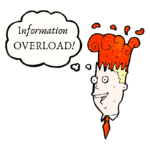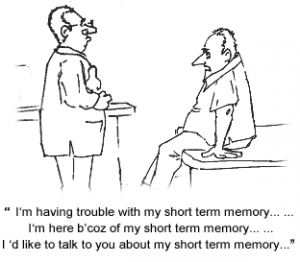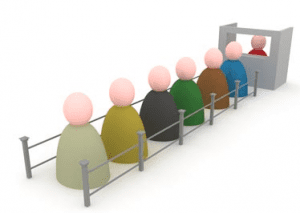 Welcome to Part 7 of my series on stress and its impact on situational awareness. I appreciate all the very nice comments I have received by email, Facebook, Twitter and LinkedIn. Keep them coming. Your messages inspire and motivate me more than you can ever imagine. Thank you so much!
Welcome to Part 7 of my series on stress and its impact on situational awareness. I appreciate all the very nice comments I have received by email, Facebook, Twitter and LinkedIn. Keep them coming. Your messages inspire and motivate me more than you can ever imagine. Thank you so much!
In the previous segment I talked about auditory exclusion and introduced you to sensory integration (including the McGurk Effect) and its impact on situational awareness. If you’ve spent time reading through the articles on this website or if you have attended one of my Mental Management of Emergencies programs you know your brain is truly an amazing, yet fallible, organ. That theme continues in this contribution as I talk about your vulnerability to suffer from information and sensory overload under stress.
Your brain is awesome at capturing, processing, storing and recalling information. But it has limitations, especially when it comes to memory under stress. There are four steps in the process of developing a memory: Encoding, storage, retrieval and forgetting. The process is quite complex. Perhaps I’ll dedicate a future article to walking readers through the complete process of memory formation. But for now, I am going to focus on the first step, encoding. Let’s explore the capacity of your brain to process sensory stimuli into short-term information stores. This is what neuroscience calls working memory.
Working memory
 You have many kinds of memory. For the sake of this contribution the two I will compare are short-term (working memory) and long-term memory. Think of working memory as being all of those things currently on your mind at this moment. Some of those things are events that have just occurred, sounds that you currently hear, or temporary memories that have come down from the long-term storage bins, residing momentarily in your short term memory while you think or talk about something.
You have many kinds of memory. For the sake of this contribution the two I will compare are short-term (working memory) and long-term memory. Think of working memory as being all of those things currently on your mind at this moment. Some of those things are events that have just occurred, sounds that you currently hear, or temporary memories that have come down from the long-term storage bins, residing momentarily in your short term memory while you think or talk about something.
The amount of information you can capture, store, process and recall in your short-term memory is quite limited – about seven pieces of unrelated information, give or take two. But, as you know, an emergency scene contains a treasure trove of information to be processed – many more than seven pieces of information, for sure!
You may be contemplating how thankful you are that you have the ability to sort out the important information from the non-important information. Otherwise you’d be in tough shape, right? Well, I have some bad news for you. Research shows, and my classes have validated through exercises I have conducted, your brain is not very good at separating important from non-important information.
What you forget
 There are a variety of factors that contribute to it, and how, you process information. Among them are:
There are a variety of factors that contribute to it, and how, you process information. Among them are:
- The complexity of the information.
- The number of senses used to process the information.
- The emotional connection to the information.
- The connection the information has to existing long-term memories.
- The various senses being stimulated to process the information.
- The shear volume of information.
It is the last on this list I want to focus on. When you are faced with a massive amount of information/sensory stimulation your brain can struggle to keep up. As brain regions become overwhelmed, the process of taking in new information (stimuli) can diminish. A system shut-down is not far from reality when it comes to how your brain responds to information overload. If this happens, your situational awareness is vulnerable. You may simply not see something or not hear something. Even though the photons are entering the eyes and the sound waves are entering the ears, the processing centers are too busy to take in the new information. The gates are, essentially, closed and locked.
The queue
 Unfortunately, there is no process for the brain to queue information while it waits its turn for processing. If the information doesn’t get in when it knocks on the door, oftentimes it simply leaves the queue and is lost forever. If the stimuli occurs in repetition (is continually present in the audible or visual field) then there is a chance that when the door unlocks, the information may get in. What information gets in depends on the list articulated above.
Unfortunately, there is no process for the brain to queue information while it waits its turn for processing. If the information doesn’t get in when it knocks on the door, oftentimes it simply leaves the queue and is lost forever. If the stimuli occurs in repetition (is continually present in the audible or visual field) then there is a chance that when the door unlocks, the information may get in. What information gets in depends on the list articulated above.
It is possible for a piece of information perceived by the brain to be so important that it can, using my analogy, knock the door down and kick out whatever information the sensory processors are working with at that moment in time. When that happens, the information that is kicked out may never come back. If this happens, the information that was booted out may be, essentially, forgotten.
If you’ve ever been working on something or thinking about something and got interrupted, say with a phone call, you may have forgotten what you were doing when the phone rang. If you’re lucky, a visual or audible prompt may guide you back to remembering what you were doing prior to the phone ringing.
The same thing can happen at an emergency scene where the environment is full audible and visual stimuli. When you’re processing a lot of information, your brain can get overwhelmed. If this happens, it can stop processing new information and even let go of existing information. This may cause you to miss seeing or hearing something really important. Or it may cause you to forget something really important.
If your sensory processing is interrupted by a new stimuli that your brain perceives to be more important, whatever you’re brain is processing at that moment may be lost.
Dr. Gasaway’s Advice
 The logical solution might be to avoid processing too much information. Sounds easy enough, right? Hardly. But there are some things you can do to help you stay focused. Here are some suggestions:
The logical solution might be to avoid processing too much information. Sounds easy enough, right? Hardly. But there are some things you can do to help you stay focused. Here are some suggestions:
- Understand, in advance, what are the most important pieces of information you need to know for the type of emergency you are dealing with. For example, when assessing a patient with a potential heart attack, the short list might include: pulse, lung sounds, skin color, blood pressure, heart rhythm and current medications.
- Understand, in advance, what are the lesser important pieces of information you do not need to know for the type of emergency you are dealing with so you don’t consume precious cognitive resources with it. Using the same example as above the list of lesser important information might include: last meal, old surgeries unrelated to the heart/circulatory system, smoking and drinking history. That’s not to say any of this information isn’t valuable. It’s just not the MOST important for dealing with the urgency of someone dying in the next 5 minutes from a myocardial infarction.
- Use prompts to help manage information. For example, a checklist for a house fire that helps identify the most important information might include: occupancy, construction, smoke/fire conditions and victim survivability profile. Each of these, in turn, might have sub categories of more prompts/reminders.
- Avoid distraction and interruptions. Each of these result from audible or visual stimulation that must be processed and understood which can contribute to overload.
- Radio discipline. There are two parts to this one. First, ensuring personnel are well-trained and well disciplined for how to talk on the radio, what is important to say, and how to say it concisely. All of this will reduce the amount of unnecessary audible stimuli to be processed. Second, it can be valuable for a supervisor to have someone else monitor the radio to ensure only the most important information is passed along to the supervisor, reducing the potential for audible stimuli overload.
 Action Items
Action Items
1. Provide some examples where you have been a victim of information/sensory overload. What caused it? How did you manage through it?
2. What tricks do you use to manage information at emergency scenes?
3. Provide some examples where you have missed hearing or seeing something because you were a victim of information/sensory overload.
_____________________________________________________
About the Author
Richard B. Gasaway, PhD, CSP is widely considered a trusted authority on human factors, situational awareness and the high-risk decision making processes used in high-stress, high consequence work environments. He served 33 years on the front lines as a firefighter, EMT-Paramedic, company officer, training officer, fire chief and emergency incident commander. His doctoral research included the study of cognitive neuroscience to understand how human factors flaw situational awareness and impact high-risk decision making.
_____________________________________________________

If you are interested in taking your understanding of situational awareness and high-risk decision making to a higher level, check out the Situational Awareness Matters Online Academy.
CLICK HERE for details, enrollment options and pricing.
__________________________________
Share your comments on this article in the “Leave a Reply” box below. If you want to send me incident pictures, videos or have an idea you’d like me to research and write about, contact me. I really enjoy getting feedback and supportive messages from fellow first responders. It gives me the energy to work harder for you.
Let’s Get connected
Facebook: SAMatters
LinkedIn: Rich Gasaway
LinkedIn: Situational Awareness Matters
Twitter: Rich Gasaway
Youtube: SAMattersTV
itunes: SAMatters Radio
Stitcher Radio: SAMatters Radio
Google Play: SAMatters Radio
iHeart Radio: SAMatters Radio

Hi Rich,
I am sure you have seen it but here is one of the videos that I show during my Crew Resource Management class when I talk about situational awareness and overload.
Jesse
Jesse,
Thanks for sharing. I use a variation of that video during my Mental Management of Emergencies program. It takes me roughly two hours after I show the video to explain the cognitive neuroscience behind the outcome. The unfortunate part of having those videos viewed on YouTube is they are watched for entertainment value and the viewer loses the opportunity to learn the valuable lessons the can save their lives.
Rich
Pingback: Stress: The Nemesis of Situational Awareness | Situational Awareness Matters!™